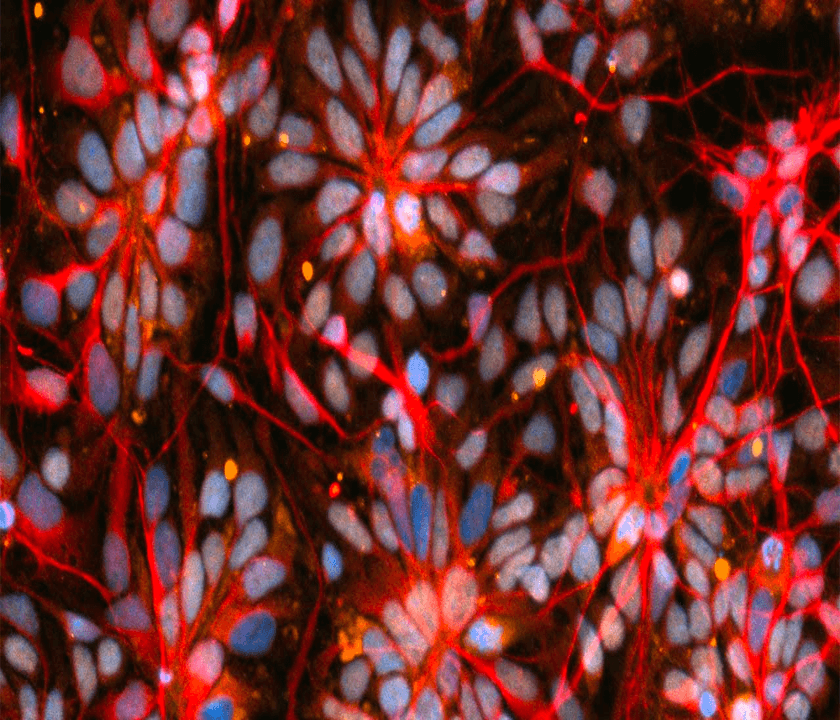Our lab primarily focuses on neurodegenerative diseases, the development of biosensors and electrochemical platforms, bioassays, stroke models and therapeutics, meta-analyses, and research across various cancer types, including liver, breast, and colon cancer

Neurodegenerative Diseases

Biosensors/ Electrochemistry/ Bioassays

Stroke Model and Therapeutics

Meta-Analysis

Cancers
Neurodegenerative Diseases
Our lab is dedicated to uncovering the complex biology behind neurodegenerative diseases such as Parkinson’s disease, Alzheimer’s disease, and Amyotrophic Lateral Sclerosis (ALS). We investigate the molecular and cellular mechanisms that drive these conditions, with a strong focus on identifying early biomarkers and developing innovative therapeutic strategies. A major area of our current research centers on the gut-brain axis, an exciting and rapidly evolving field that explores how changes in the gut microbiota can influence brain function and contribute to neurodegeneration. By profiling microbial communities and their metabolic outputs, we aim tounderstand how gut dysbiosis may accelerate disease progression and to develop microbiome-based interventions for prevention and treatment. This multidisciplinary approach integrates neuroscience, microbiology, and translational medicine, offering novel insights into some of the most pressing challenges in brain health.
Biosensors/ Electrochemistry/ Bioassays
Our lab is actively advancing the field of biosensing and electrochemical diagnostics, with a focus on developing highly sensitive, specific, and real-time biosensors for detecting disease-related biomarkers, including those linked to cancer, neurodegeneration, and oxidative stress. A key area of our work also involves studying Reactive Oxygen Species (ROS)—harmful byproducts of cellular metabolism that contribute to the progression of various diseases such as stroke, cancer, and neurodegenerative disorders. We design innovative assays and materials to accurately detect and neutralize ROS, supporting both diagnostic and therapeutic advancements. Together, these efforts aim to improve early detection, disease monitoring, and the development of effective treatment strategies.
Publications
- Madhuvilakku, R., Choi, H.J., Jeong, O.C. and Hong, Y., 2025. Nanozyme film with dicopper-coordinated amino-ligands: A dual enzyme-mimic for real-time in situ dopamine sensing in human neuroblastoma cells. Biosensors and Bioelectronics, 278, p.117375.
- Madhuvilakku, R., Hong, Y., Nila, I.S., Villagra Moran, V.M., Subramanian, P., Khan, Z.A., Jeong, S. and You, S.G., 2023. Quantification of neuronal cell-released hydrogen peroxide using 3D mesoporous copper-enriched prussian blue microcubes nanozymes: a colorimetric approach in real time and anticancer effect. ACS Applied Materials & Interfaces, 15(48), pp.55466-55485.
- Madhuvilakku, R. and Hong, Y., 2024. Portable Sensing Probe for Real-Time Quantification of Ammonia in Blood Samples. ACS Applied Materials & Interfaces, 16(36), pp.47242-47256.
Stroke Model and Therapeutics
Our research focuses on developing novel therapeutic approaches aimed at reducing infarct volume, enhancing neurological and behavioral outcomes, and promoting neuroplasticity following cerebral ischemia-reperfusion injury. Using well-established middle cerebral artery occlusion (MCAO) models in rats and mice, we are investigating innovative strategies to improve recovery and advance understanding of stroke pathophysiology.
Meta-Analysis
At our laboratory, we are deeply engaged in conducting comprehensive meta-analyses focused on major neurodegenerative diseases, including Parkinson’s disease, Alzheimer’s disease, amyotrophic lateral sclerosis (ALS), sarcopenia, and stroke. Our objective is to systematically synthesize and critically evaluate existing scientific literature to provide robust, high-quality evidence that can inform clinical practices and guide future research directions.Through rigorous methodology, including systematic literature searches, strict inclusion and exclusion criteria, quantitative data extraction, and advanced statistical analyses, we aim to uncover consistent patterns, assess the efficacy of therapeutic interventions, and identify gaps in current knowledge across these debilitating conditions. Our meta-analyses not only summarize treatment outcomes and pathophysiological insights but also explore biomarkers, disease progression, and the impact of emerging therapeutic strategies.By integrating data from a wide range of studies, we strive to enhance the understanding of disease mechanisms, improve diagnostic and prognostic models, and ultimately contribute to the development of more effective prevention and treatment approaches for neurodegenerative disorders. Our work emphasizes transparency, reproducibility, and scientific rigor, aligning with international standards for meta-analytic research.
Publications
- Sumsuzzman, D.M., Kim, Y., Baek, S. and Hong, Y., 2024. Cutting-Edge Methodological Guidance for Authors in Conducting the Systematic Review and Meta-Analysis. Journal of Lifestyle Medicine, 14(2), p.57.
- Fatima, R., Kim, Y., Baek, S., Suram, R.P., An, S.J.L. and Hong, Y., 2025. C‐Terminal Agrin Fragment as a Biomarker for Sarcopenia: A Systematic Review and Meta‐Analysis. Journal of Cachexia, Sarcopenia and Muscle, 16(1), p.e13707.
- Fatima, R., Kim, Y., Baek, S., Suram, R.P., An, S.J.L. and Hong, Y., 2025. C‐Terminal Agrin Fragment as a Biomarker for Sarcopenia: A Systematic Review and Meta‐Analysis. Journal of Cachexia, Sarcopenia and Muscle, 16(1), p.e13707.
- Nila, I.S., Sumsuzzman, D.M., Khan, Z.A., Jung, J.H., Kazema, A.S., Kim, S.J. and Hong, Y., 2022. Identification of exosomal biomarkers and its optimal isolation and detection method for the diagnosis of Parkinson's disease: A systematic review and meta-analysis. Ageing research reviews, 82, p.101764.
- Khan, Z.A., Sumsuzzman, D.M., Choi, J. and Hong, Y., 2022. Neurodegenerative effect of DAPK1 after cerebral hypoxia-ischemia is associated with its post-transcriptional and signal transduction regulations: A systematic review and meta-analysis. Ageing Research Reviews, 76, p.101593.
Cancers
Our laboratory is dedicated to the development of novel therapeutic strategies for cancer treatment. Wehave previously explored the potential of melatonin as a chemotherapeutic agent for colorectal cancer, demonstrating its ability to inhibit tumor progression through modulation of oxidative stress and apoptotic pathways. In addition, we have successfully designed and synthesized a copper Prussian blue nanozyme, which enhances reactive oxygen species (ROS) generation in colorectal cancer cells, leading to increased oxidative damage and selective cancer cell destruction. This work highlights the potential of nanozyme-based therapies as a powerful tool in cancer treatment. Building on these promising results, our current research is focused on advancing this technology to develop next-generation nanozymes specifically targeted toward liver cancer. Our goal is to engineer nanozymes with enhanced specificity for cancer cells, aiming to maximize therapeutic efficacy while minimizing effects on healthy tissue. Through this multidisciplinary approach, we strive to contribute to the advancement of precision oncology and innovative nanomedicine.
Publications
- Hong, Y., Won, J., Lee, Y., Lee, S., Park, K., Chang, K.T. and Hong, Y., 2014. Melatonin treatment induces interplay of apoptosis, autophagy, and senescence in human colorectal cancer cells. Journal of pineal research, 56(3), pp.264-274.
- Madhuvilakku, R., Hong, Y., Nila, I.S., Villagra Moran, V.M., Subramanian, P., Khan, Z.A., Jeong, S. and You, S.G., 2023. Quantification of neuronal cell-released hydrogen peroxide using 3D mesoporous copper-enriched prussian blue microcubes nanozymes: a colorimetric approach in real time and anticancer effect. ACS Applied Materials & Interfaces, 15(48), pp.55466-55485.

